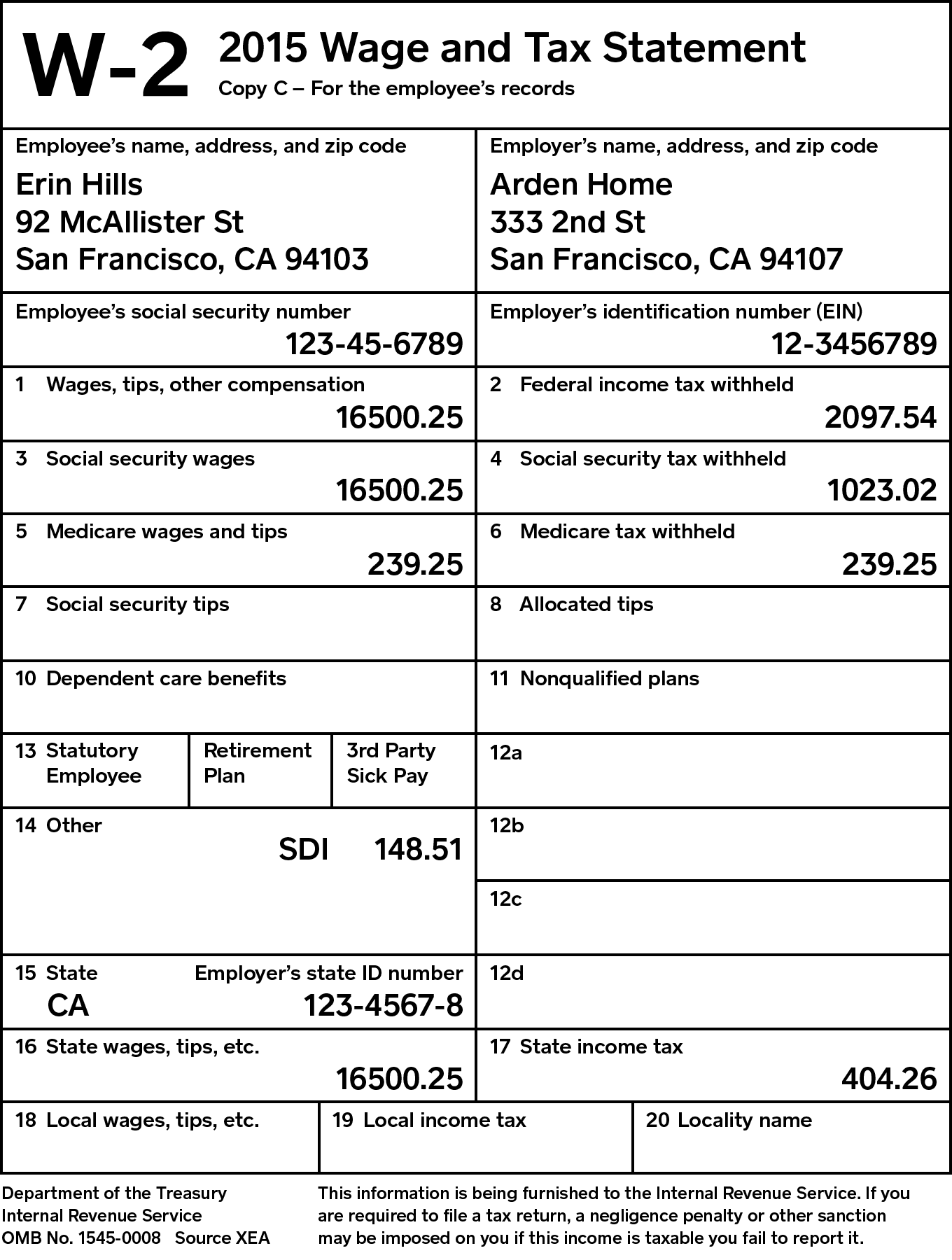If you are an employee in the United States, you will receive a W-2 form from your employer at the end of each tax year. This document summarizes your annual earnings and taxes withheld, and you need it to file your federal and state income tax returns accurately. To help you understand the W-2 form better, we have provided a guide to its various sections.
Box 1: Wages, Tips, and Other Compensation
Box 1 shows your total taxable earnings from your employer for the year, regardless of when you actually received the payments. This includes your regular pay, bonuses, severance pay, and vacation pay. It does not include non-taxable perks like health insurance premiums, 401(k) contributions, or commuting benefits. Some other earnings that may be included in Box 1 are tips you reported to your employer, expense reimbursements, and fringe benefits.
 It is essential to check that Box 1 matches your actual earnings for the year, and if there are any discrepancies, you should contact your employer to make sure they have reported everything correctly. If you received a salary increase or promotion during the year, your Box 1 earnings may be higher than what you expected.
It is essential to check that Box 1 matches your actual earnings for the year, and if there are any discrepancies, you should contact your employer to make sure they have reported everything correctly. If you received a salary increase or promotion during the year, your Box 1 earnings may be higher than what you expected.
Box 2: Federal Income Tax Withheld
Box 2 shows the amount of federal income tax withheld from your paychecks during the year. This includes the amount withheld from your regular pay as well as any bonuses or other taxable earnings. The amount withheld is calculated based on the information you provided on your W-4 form, including your filing status, the number of allowances you claimed, and any additional amounts you requested to be withheld.
If the amount in Box 2 is substantially lower than you expected, you may need to adjust your tax withholding for the next year. If you paid too much in federal income tax, you may be entitled to a refund when you file your tax return.
Box 3: Social Security Wages
Box 3 shows your taxable earnings for Social Security purposes. This includes your regular pay, bonuses, severance pay, and vacation pay, up to the annual Social Security wage base limit, which is $142,800 in 2021. Any earnings above this limit are not subject to Social Security tax.
Box 4: Social Security Tax Withheld
Box 4 shows the amount of Social Security tax that was withheld from your pay during the year. The Social Security tax rate is 6.2% of your taxable earnings, up to the annual wage base limit.
Box 5: Medicare Wages and Tips
Box 5 shows your taxable earnings for Medicare tax purposes. This includes your regular pay, bonuses, severance pay, and vacation pay, without any wage base limit.
Box 6: Medicare Tax Withheld
Box 6 shows the amount of Medicare tax that was withheld from your pay during the year. The Medicare tax rate is 1.45% of your taxable earnings.
Box 7: Social Security Tips
Box 7 shows the tips you reported to your employer for Social Security purposes.
Box 8: Allocated Tips
Box 8 shows any tips that your employer allocated to you for unreported or underreported tips. Allocated tips are tips that your employer assigns to you based on their estimate of the tips you received, or the tips received by all employees in a certain job category or shift. If you disagree with the allocation, you should discuss it with your employer.
Box 9: Verification Code
Box 9 shows a verification code that the IRS uses to validate your W-2 form information. This code is a 16-digit alphanumeric code that is unique to your employer. It is used to combat fraud and errors in tax returns.
Box 10: Dependent Care Benefits
Box 10 shows any dependent care benefits you received from your employer during the year. This includes amounts paid for expenses like daycare or babysitting for qualified dependents.
Box 11: Nonqualified Plans
Box 11 shows any distributions you received from a nonqualified deferred compensation plan or non-governmental section 457(b) plan during the year. These plans allow you to defer part of your compensation to a later year, and the amounts you defer and the earnings on them are not included in your taxable income until they are distributed to you.
Box 12: Codes
Box 12 is a collection of codes that show various types of compensation or benefits you received from your employer. Each code corresponds to a specific type of compensation or benefit, and you can look up the code descriptions in the W-2 form instructions to see what they mean.
Box 13: Checkboxes
Box 13 contains three checkboxes that indicate whether you are a statutory employee, participated in a retirement plan, or received third-party sick pay during the year. Statutory employees are typically independent contractors who meet certain criteria, and they are treated differently for tax purposes than regular employees.
Box 14: Other
Box 14 is a catch-all box that your employer can use to report any other information not covered by the other boxes. Examples of what might be included in Box 14 are union dues, uniform costs, educational assistance payments, or imputed income.
By reading and understanding your W-2 form, you can take control of your taxes and make sure you are paying the correct amount. If you have any questions or concerns about your W-2 form, don’t hesitate to reach out to your employer or a tax professional for assistance.